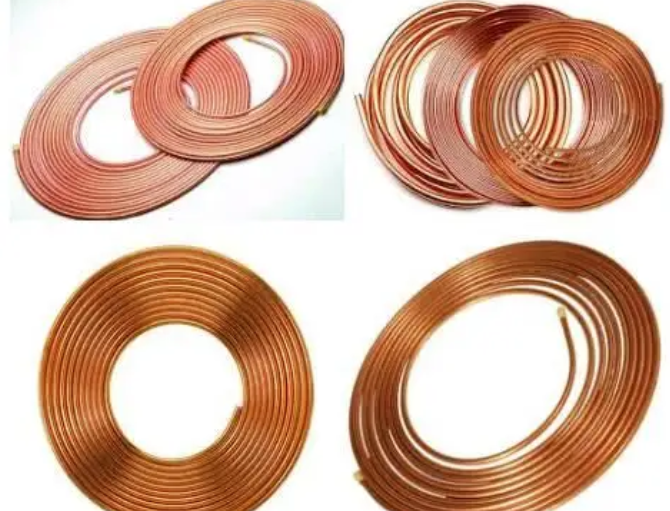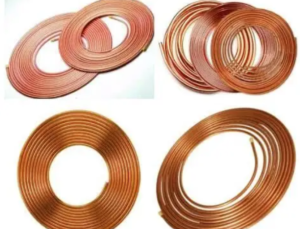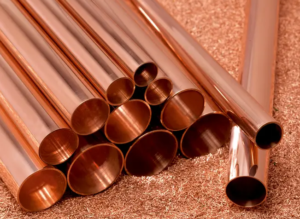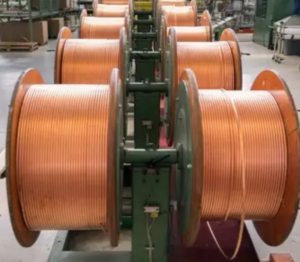If you’re planning on installing an air conditioning unit in your home, you need to make sure you’re using the right materials for the job. One of the most popular options for air conditioning installation is copper pipe. Copper pipe is durable, easy to work with, and has excellent heat transfer properties. It’s also resistant to corrosion and has a long lifespan. But, knowing how to properly use copper pipe for air conditioning installation can be tricky. Fortunately, this comprehensive guide will provide you with all the information you need to know about the benefits of copper pipe, how to choose the right size, how to cut and bend it, and how to connect it to your air conditioning unit. With this guide, you’ll be able to confidently install your own air conditioning unit and enjoy a cool and comfortable home all summer long.
First and foremost, let’s go into why copper pipe is the preferred material for air conditioning systems. Its superior thermal conductivity allows for efficient heat transfer, ensuring that your air conditioning unit operates at peak performance. Copper pipes also have a high melting point and can withstand high pressure, making them suitable for the demanding conditions of air conditioning systems.
Furthermore, copper is highly resistant to corrosion, which is crucial for maintaining the longevity and efficiency of your air conditioning system. Unlike other materials, copper does not rust or deteriorate over time, ensuring that your investment remains intact for years to come.
Using copper pipe for air conditioning installation offers numerous benefits, including improved energy efficiency, reduced maintenance costs, and enhanced system reliability. With its remarkable attributes, copper has become the go-to choice for HVAC professionals worldwide.
In the following sections of this guide, we will go further into the different types and sizes of copper pipe, the tools and materials needed for installation, and the step-by-step procedures to ensure a seamless and successful air conditioning installation using copper pipe.
So, if you’re ready to embark on your air conditioning installation journey and want to ensure a professional and durable outcome, read on to discover the ultimate guide to using copper pipe for air conditioning installation.
Benefits of Using Copper Pipe for Air Conditioning Systems
Using copper pipe for air conditioning systems offers a multitude of benefits that make it the ultimate choice for installation.
This means that it is highly efficient in transferring heat, allowing for quick and effective cooling. Copper pipes can efficiently carry the refrigerant throughout the system, ensuring optimal performance and energy efficiency. This not only helps in reducing energy consumption but also results in lower utility bills.
In addition to its superior thermal conductivity, copper is also known for its durability and longevity. Copper pipes are resistant to corrosion, which is crucial in air conditioning systems where moisture and condensation are common. This resistance ensures that the pipes remain intact and free from leaks, even in high-humidity environments. The durability of copper also means that the pipes require minimal maintenance, saving both time and money in the long run.
Copper is a malleable material, allowing for easy bending and shaping during installation. This flexibility makes it ideal for intricate air conditioning systems that may require complex pipe configurations. Copper pipes can be easily manipulated to fit tight spaces and navigate obstacles, ensuring a smooth and efficient installation process.
Another advantage of using copper pipes is their compatibility with various refrigerants. Copper is compatible with commonly used refrigerants, such as R-410A, ensuring compatibility and efficient operation of the air conditioning system.
Lastly, copper pipes are environmentally friendly. Copper is a recyclable material, making it a sustainable choice for air conditioning installations. By using copper pipes, you contribute to the reduction of waste and promote a greener approach to HVAC systems.
Types of Copper Pipe Commonly Used in Air Conditioning Installation
Copper pipes are widely regarded as the preferred choice for their durability, efficiency, and reliability. However, not all copper pipes are created equal, and understanding the different types available can greatly impact the success of your installation project.
1. Type M Copper Pipe: This is the most common type of copper pipe used in residential air conditioning installations. It is characterized by its thin walls and is typically used for low-pressure applications. Type M copper pipe is affordable and readily available, making it a popular choice for budget-conscious projects.
2. Type L Copper Pipe: If you’re looking for a more robust option, Type L copper pipe is a step up from Type M. It has thicker walls, making it suitable for higher pressure applications. This type of copper pipe is commonly used in commercial air conditioning systems and offers improved durability and longevity.
3. Type K Copper Pipe: Known for its heavy-duty construction, Type K copper pipe is the strongest and thickest option available. It is ideal for applications that require high pressure or where the pipe may be subjected to harsh conditions. While Type K copper pipe may be more expensive than other types, its superior strength and reliability make it a preferred choice for demanding installations.
4. Refrigeration Copper Pipe: Specifically designed for refrigeration and air conditioning systems, refrigeration copper pipe is pre-insulated to prevent condensation and ensure optimal system performance. It is typically available in both soft and hard varieties and is commonly used for connecting the indoor and outdoor units of an air conditioning system.
Choosing the right type of copper pipe for your air conditioning installation is crucial to ensure the longevity and efficiency of your system. Consider factors such as pressure requirements, budget constraints, and the specific demands of your project when making your selection. Ultimately, investing in high-quality copper pipe will provide peace of mind and contribute to a successful and reliable air conditioning installation.
Tools and Equipment Needed for Working With Copper Pipe
During an air conditioning installation, having the right tools and equipment is crucial. Not only will it make the process easier, but it will also ensure that you achieve professional results. Here are some essential tools and equipment you’ll need:
1. Pipe Cutter: A pipe cutter is an essential tool for cutting copper pipe with precision. Look for a cutter that is specifically designed for copper pipes and has a sharp cutting wheel.
2. Deburring Tool: After cutting the copper pipe, it’s important to remove any rough edges or burrs. A deburring tool will help you smooth out the cut ends, ensuring a clean and secure connection.
3. Flaring Tool: Flaring is necessary when you need to create a flare on the end of the copper pipe to attach it to fittings. A flaring tool allows you to create a uniform flare, ensuring a tight and leak-free connection.
4. Bending Tool: Copper pipes often need to be bent to fit around corners and obstacles. A bending tool, such as a tube bender or a bending spring, will help you achieve smooth and accurate bends without kinking or damaging the pipe.
5. Soldering Equipment: Soldering is used to join copper pipes and fittings together. To perform this task, you’ll need a soldering iron or torch, flux, solder, and a cleaning brush. Make sure to follow proper safety precautions when using a soldering tool.
6. Measuring Tape and Marker: Accurate measurements are essential for a successful air conditioning installation. Having a measuring tape and a marker will help you mark precise lengths and locations for cutting and fitting the copper pipe.
7. Pipe Wrench: A pipe wrench is a versatile tool that will come in handy for tightening and loosening fittings, as well as holding pipes in place during installation.
8. Safety Gear: Don’t forget to prioritize safety while working with copper pipe. Wear protective gloves, safety glasses, and appropriate clothing to protect yourself from any potential hazards.
By having these necessary tools and equipment in your arsenal, you’ll be well-prepared to tackle any air conditioning installation project involving copper pipe. Remember to invest in quality tools that will last long and deliver professional results, ensuring the durability and efficiency of your installation.



